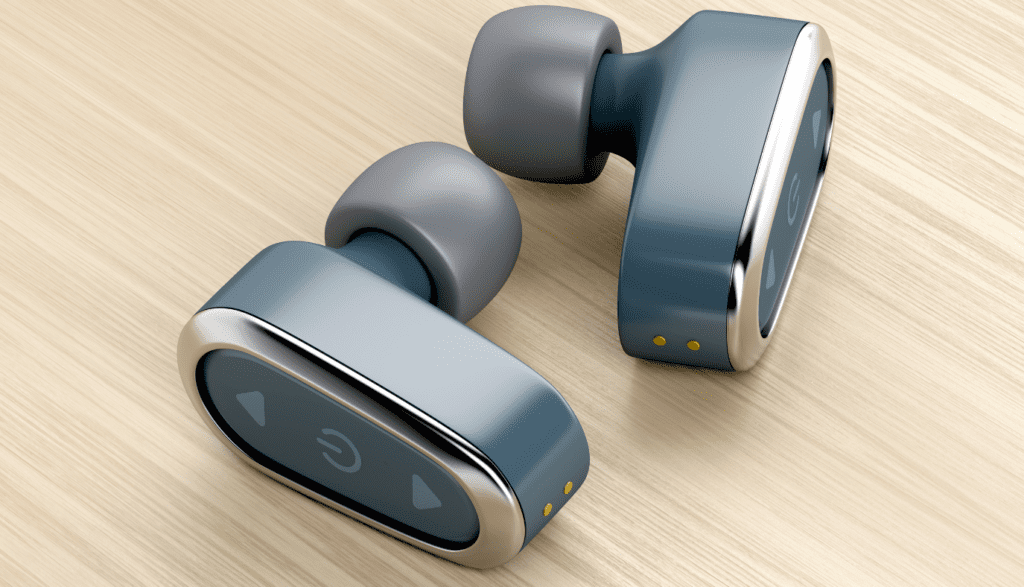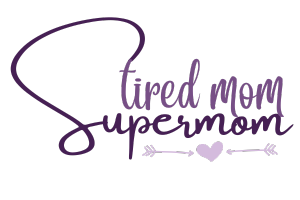Protecting Your Teen’s Hearing With Headphone Safety
If you need some help protecting your teen’s hearing, then this is a great post for you!
In today’s world, personal audio devices have become a ubiquitous accessory for young people.
From listening to music at high volumes to immersing themselves in video games, teenagers often have their headphones on for extended periods.
While this can be a source of entertainment and solace, it also poses significant risks to their hearing health.
This post may contain affiliate links. Full privacy policy and disclosure here.
Noise-Induced Hearing Loss
Noise-induced hearing loss is a serious concern, and its prevalence among young adults is on the rise.
The World Health Organization warns that loud sounds, especially when experienced through headphones, can cause permanent damage to the inner ear, leading to hearing loss.
It’s essential to address this issue, especially in a world where exposure to loud music at concerts, sporting events, and other entertainment venues is common.

Understanding Noise-Induced Hearing Loss
Exploring the Risks of Noise-Induced Hearing Loss: How High Volume and Recreational Sound Exposure Lead to Permanent Hearing Damage
Noise-induced hearing loss represents a type of sensorineural hearing impairment, often resulting from prolonged or repeated exposure to sounds exceeding 85 decibels, a level comparable to busy city traffic. This form of hearing loss, exacerbated by high volumes and occupational noise, is particularly concerning for teens who frequently use personal audio devices at max volume, significantly surpassing the safe level.
The risk extends to environments like loud concerts, where extended listening times at high decibel levels can contribute to lifelong hearing loss. Children’s ears are especially vulnerable, with ear pain being a common symptom of exposure to lower levels of noise than adults can withstand. This highlights the importance of proper safety measures, such as volume-limiting headphones, advocated by experts like Dr. Rick Neitzel and Dr. James E. Foy of the American Osteopathic Association.
The New York Times Company and other sources emphasize the need for awareness of the 85-decibel number and the consequence of background noise. Digital devices, particularly when used with ear buds or headphones, should be monitored to ensure that volume levels stay within a safe range, ideally at arm’s length or lower volumes. The duration of exposure, as noted by Dr. Neitzel, also plays a critical role in preventing permanent damage.
Teen years are a critical time for developing good habits, such as limited screen time and consistent use of ear protection, to mitigate the rate of hearing loss. Following symptoms like difficulty hearing at lower volumes or experiencing ear pain should prompt a medical examination. The mythical status of invulnerability during this period often leads to neglecting these proper safety measures, risking a lifetime of type of hearing loss that a lot of people experience due to recreational sound exposure and inadequate precautionary practices.
The Role of Noise-Cancelling Headphones
In an effort to safeguard the delicate hearing of their children, a growing number of parents are opting for noise-cancelling headphones. These devices, designed to mitigate background noise, operate by producing sound waves that negate incoming noise. This technology is especially beneficial in environments with high noise levels, like loud concerts, where the risk of permanent hearing loss is significantly heightened.
Noise-cancelling headphones can indeed lower the overall decibel level reaching the listener’s ears, potentially protecting the tiny hair cells within the ear that are crucial for hearing. Dr. Rick Neitzel, an expert in disease control through auditory care, supports their use as a means of reducing exposure to harmful noise levels over long periods of time. Similarly, Dr. James E. Foy emphasizes the importance of maintaining a safe volume level during headphone use, especially for ‘little ears’ that are more susceptible to damage.
However, these devices also present a notable risk. By creating a quieter listening environment, noise-cancelling headphones may inadvertently encourage users to increase the volume level, potentially leading to unsafe listening practices. This is particularly concerning given the amount of time many individuals, especially children, spend using headphones. Dr. Foy and Dr. Neitzel caution that prolonged listening time, even at lower perceived volumes, can still result in harmful exposure to loud sounds.
It’s crucial to set a good example of responsible headphone use. Parents and caregivers should monitor the number of headphones used and the duration of their use. Encouraging regular breaks and setting volume limits can help prevent the gradual onset of hearing damage. Additionally, being aware of any signs of hearing difficulty or discomfort in children can prompt timely interventions to protect their hearing health.
Safe Listening Practices
The American Academy of Pediatrics recommends the 60/60 rule as a good rule of thumb for safe listening.
Teens should use their headphones at no more than 60% of the maximum volume for a maximum of 60 minutes at a time. This approach allows for enjoyable listening without risking hearing damage.

Understanding Decibel Levels
To put the importance of volume control into perspective, it’s crucial to consider decibel levels:
- Normal conversation: Approximately 60 decibels
- Live music concert: Around 110-120 decibels
- Threshold of pain: 130-140 decibels
Listening to music at high volumes for prolonged periods can lead to damage to the delicate hair cells in the inner ear, which cannot regenerate once lost. As a result, even mild hearing loss can be permanent, and hearing aids may be needed.
Loud noises can pose a significant threat to your child’s hearing, especially when coupled with the unchecked use of headphones at high volumes.
Whether it’s the thunderous decibels at a rock concert or the daily sounds emitted by electronic devices, prolonged exposure to elevated noise levels can lead to a heightened risk of hearing loss. In the United States, the Occupational Safety and Health Administration (OSHA) has set 85 decibels as the threshold for safe noise levels, particularly in occupational environments.
Imagine the volume at a sporting event, or the constant background noise that your child encounters during their daily activities.
Without proper precautions, their young ears are at risk. This is where headphones, especially those designed for children, come into play, providing a safer listening experience. Devices equipped with volume-limiting features, like children’s headphones, ensure that the sound levels remain at a safe volume.
Long battery life also keeps the music playing without requiring excessive volume. Protecting your child’s ears with volume limits, noise-canceling headphones, and occasional breaks can make all the difference. It’s not just about safe listening; it’s about safeguarding your child’s auditory future.
By following these guidelines and using the right equipment, you can help ensure that their hearing remains in great shape as they transition into their teenage years and beyond.
Safe Headphones: An Urgent Need
Dr. Rick Neitzel, an associate professor of environmental health sciences at the University of Michigan, highlights the urgent need for safe headphones for children and teenagers. Not all headphones have volume-limiting features, which can expose young ears to excessive noise.
Parents must actively search for headphones that prioritize safety. Such devices include volume controls that limit the maximum output to around 85 decibels, a level considered safe by experts. Some headphones also incorporate features like comfortable ear pads and sturdy build quality for extended use without discomfort.
Sound Meters: A Valuable Tool
For parents who want to take a proactive role in monitoring their children’s listening habits, sound meter apps and devices can be helpful. These tools enable you to measure the sound level of your child’s headphones and ensure that they are not exposed to dangerous decibel levels.
Promoting Healthy Listening Habits
Educating your teenager about the risks of excessive noise exposure and the importance of safe headphone usage is essential.
Encourage them to follow the 60/60 rule and take breaks when listening to music for extended periods.
In the quest to safeguard your teen’s hearing, the choice of headphones plays a pivotal role. To make an informed decision, you should explore a range of options, from the Best Wireless Headphones For Teens to the Top Headphones For Teens, and even delve into the safety aspects addressed in “Are Wired Headphones Safer than Wireless?” Connecting the dots between these articles will provide you with a comprehensive understanding of the best choices for your teenager’s audio experience while ensuring their hearing remains protected.

The Bottom Line: Protecting Your Teen’s Hearing
Noise-induced hearing loss is entirely preventable. By promoting safe listening practices and choosing headphones designed with hearing health in mind, parents can help their teenagers enjoy high-quality music without compromising their hearing.
With the rising prevalence of headphone usage among young adults, it is more important than ever to address this issue, ensuring that future generations do not suffer the consequences of unsafe listening practices.
References
- Prevalence and Risk of Hearing Loss: A significant number of adolescents and young adults are exposing themselves to loud noise or music through earphones for prolonged periods, which may lead to NIHL later in life. This type of hearing loss is caused by long-term exposure to sounds that are either too loud or last too long, damaging the sensory hair cells in the ear (Das, 2020).
- Personal Audio System Usage as a Major Risk Factor: Personal audio systems (PAS) are a significant risk factor for NIHL. Users are at about 4-times greater risk of developing NIHL than non-users, with hearing loss reported in users as young as 9. Nearly half of PAS users aged 12-35 listen at volume settings above 50%, putting them at risk of auditory damage (Fink & Mayes, 2021).
- Impact of Leisure Noise Exposure: The increasing use of personal listening devices (PLDs) correlates with a rise in hearing loss among younger age groups. In a study involving Korean adolescents, about 17% exhibited at least slight hearing loss, and the use of gaming centers and being asked to lower earphone volume were associated with both speech-frequency and high-frequency hearing loss (Rhee et al., 2019).
- Potential Risk in Students Using Personal Audio Devices: Among 3000 students studied, 3.2% were identified with hearing loss, and 72% were unaware of NIHL. Most students used volume settings above 60%, and about 65% had been using audio devices for more than 6 years (Srihari et al., 2021).
- Hearing Preservation Education’s Impact: Education about hearing preservation significantly alters students’ awareness, intention, attitudes, and motivation concerning recreational noise exposure and safe PLD usage. This shows the importance of educational interventions in preventing NIHL (Sameni et al., 2022).

